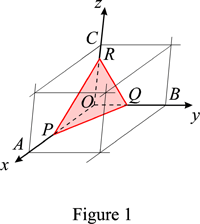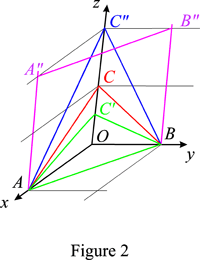Difference between revisions of "Miller indices"
From Online Dictionary of Crystallography
(→See also) |
BrianMcMahon (talk | contribs) m (Tidied translations.) |
||
| (One intermediate revision by the same user not shown) | |||
| Line 1: | Line 1: | ||
| − | <font color = "blue">Indices de Miller</font> (''Fr''). <font color = "red">Millersche Indizes</font> (''Ge''). <font color=" | + | <font color = "blue">Indices de Miller</font> (''Fr''). <font color = "red">Millersche Indizes</font> (''Ge''). <font color="black">Indici di Miller</font> (''It''). <font color="purple">ミラー指数</font> (''Ja''). <font color="brown">Индексы Миллера</font> (''Ru''). <font color="green">Indices de Miller</font> (''Sp''). |
== Definition == | == Definition == | ||
Latest revision as of 09:23, 11 December 2017
Indices de Miller (Fr). Millersche Indizes (Ge). Indici di Miller (It). ミラー指数 (Ja). Индексы Миллера (Ru). Indices de Miller (Sp).
Contents
[hide]Definition
Direct space
The law of rational indices states that the intercepts, OP, OQ, OR, of the natural faces of a crystal form with the basis vectors OA = a, OB = b, and OC = c are inversely proportional to prime integers, h, k, l, called Miller indices of the face. This definition can be extended to any reticular plane whose intercepts with the basis vectors are OP = C a/h, OQ = C b/k, and OR = C c/l (see Fig. 1). When the lattice is indexed with respect to a primitive basis, h, k, l are relatively prime integers (i.e. not having a common factor other than +1 or -1); this restriction does not hold when a centred unit cell is chosen. C is an integer which, when made variable, identifies a specific lattice plane of the infinite set having the same orientation with respect to the basis vector. This infinite set of planes defines a family of lattice planes, denoted by the Miller indices in parentheses: (hkl). The Miller indices of the equivalent faces of a crystal form are denoted by {hkl}. The variation of the orientation of the planes with the ratios of the Miller indices is illustrated in the attached examples. The equation of the planes of the family is
hx + ky + lz = C.
Reciprocal space
The reciprocal lattice vector associated with the family of lattice planes is OH = h a* + k b* + l c*, where a*, b*, c* are the reciprocal lattice basis vectors. OH is perpendicular to the family of lattice planes and OH = 1/d where d is the lattice spacing of the family. When a centred unit cell is used in direct space, integral reflection conditions are observed in the reciprocal space which correspond to the non relatively prime Miller indices of the family of lattice planes.
Bravais-Miller indices (hexagonal axes)
In the case of a hexagonal lattice, one uses four axes, a1, a2, a3, c and four indices, (hkil), called Bravais-Miller indices, where h, k, i, l are again inversely proportional to the intercepts of a plane of the family with the four axes. The indices h, k, i are cyclically permutable and are related by
h + k + i = 0.
Behaviour in a change of basis
In a change of basis the Miller indices h, k, l transform like the basis vectors a, b, c and are for that reason covariant quantities.
Rhombohedral crystals
The Miller indices hR, kR, lR referred to rhombohedral axes are related to the corresponding indices, hH, kH, iH, lH referred to hexagonal axes by:
| hH = kR - lR | ; | hR = ⅓(- kH + iH + lH) |
| kH = lR - hR | ; | kR = ⅓(hH - iH + lH) |
| iH = hR - kR | ; | lR = ⅓(- hH + kH + lH) |
| lH = hR + kR + lR. |
Example
Orientation of lattice planes depending on their Miller indices
The Miller indices of the planes ABC', ABC, ABC" , AA"BB" are (112), (111), (221), (110), respectively. These planes have AB , or [1{\bar 1}0], as common zone axis.
History
The first to introduce indices to denote a crystal plane was C. S. Weiss. His notation was modified independently by his student F. E. Neumann and W. Whewell whose indices are the inverse of the Weiss indices. These indices were systematically used by Whewell's student, and successor at the Chair of Mineralogy at Cambridge University, in his book A treatise on Crystallography (1839) - see Historical Atlas of Crystallography (1990), edited by J. Lima de Faria, published for the International Union of Crystallography by Kluwer Academic Publishers, Dordrecht, and A. Authier (2013), The Early Days of X-ray Diffraction, Oxford: IUCr/Oxford University Press.
See also
- Direction indices
- Laue indices
- Law of rational indices
- Reciprocal lattice
- Weiss parameters
- Miller, W. H. (1839). A treatise on crystallography. Cambridge: Pitt Press. Online copy at archive.org
- Nespolo, M. (2015). J. Appl. Cryst. 48, 1290–1298. The ash heap of crystallography: restoring forgotten basic knowledge. Discussion about non-coprime Miller indices

